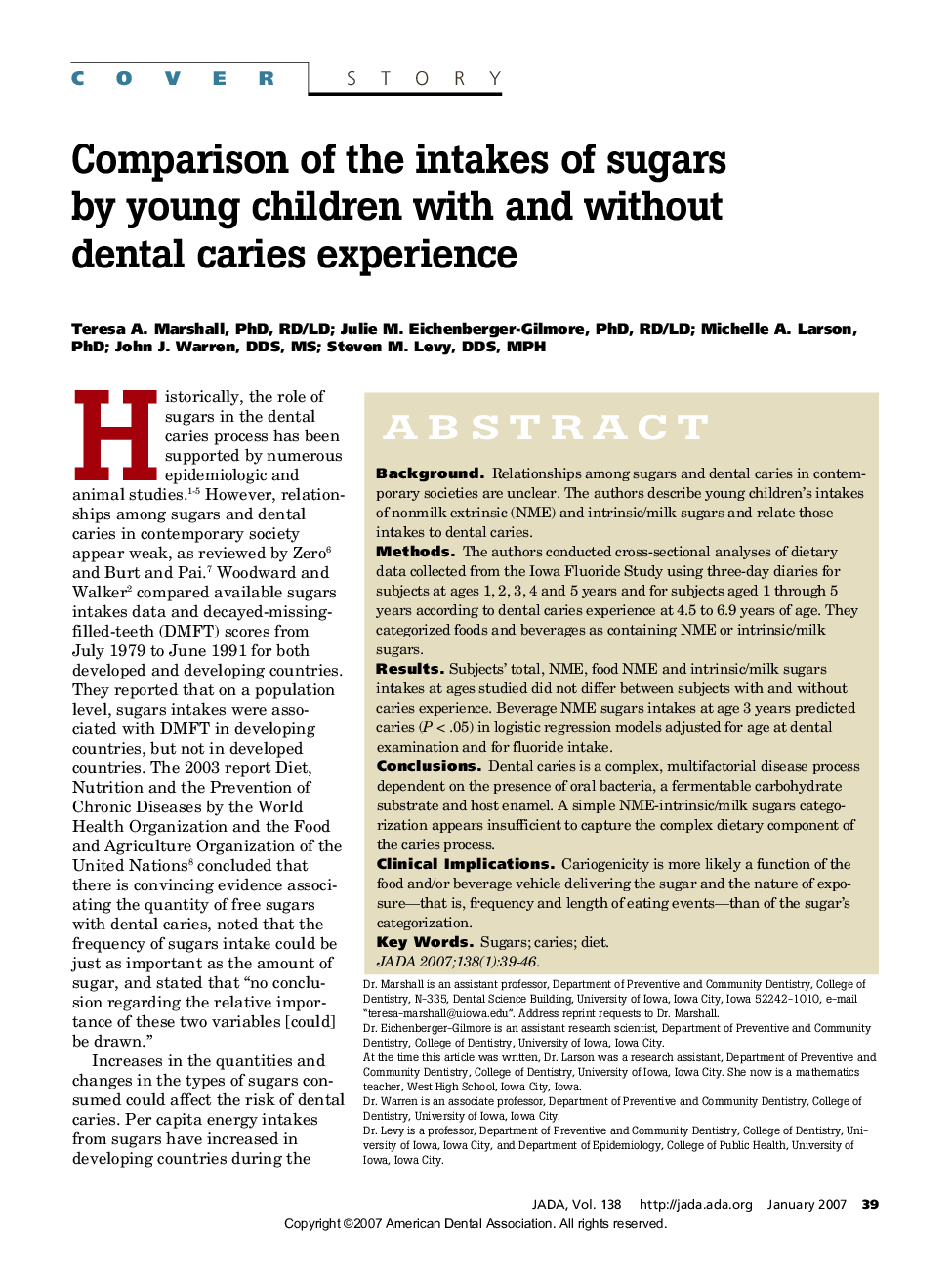| Article ID | Journal | Published Year | Pages | File Type |
|---|---|---|---|---|
| 3140570 | The Journal of the American Dental Association | 2007 | 8 Pages |
ABSTRACTBackgroundRelationships among sugars and dental caries in contemporary societies are unclear. The authors describe young children's intakes of nonmilk extrinsic (NME) and intrinsic/milk sugars and relate those intakes to dental caries.MethodsThe authors conducted cross-sectional analyses of dietary data collected from the Iowa Fluoride Study using three-day diaries for subjects at ages 1, 2, 3, 4 and 5 years and for subjects aged 1 through 5 years according to dental caries experience at 4.5 to 6.9 years of age. They categorized foods and beverages as containing NME or intrinsic/milk sugars.ResultsSubjects' total, NME, food NME and intrinsic/milk sugars intakes at ages studied did not differ between subjects with and without caries experience. Beverage NME sugars intakes at age 3 years predicted caries (P < .05) in logistic regression models adjusted for age at dental examination and for fluoride intake.ConclusionsDental caries is a complex, multifactorial disease process dependent on the presence of oral bacteria, a fermentable carbohydrate substrate and host enamel. A simple NME-intrinsic/milk sugars categorization appears insufficient to capture the complex dietary component of the caries process.Clinical ImplicationsCariogenicity is more likely a function of the food and/or beverage vehicle delivering the sugar and the nature of exposure—that is, frequency and length of eating events—than of the sugar's categorization.
